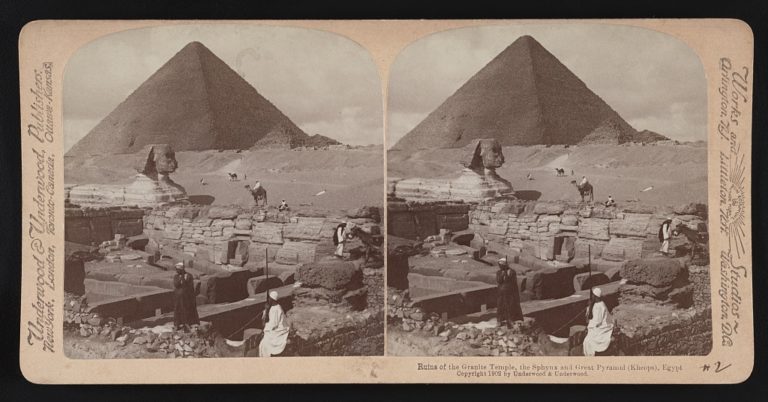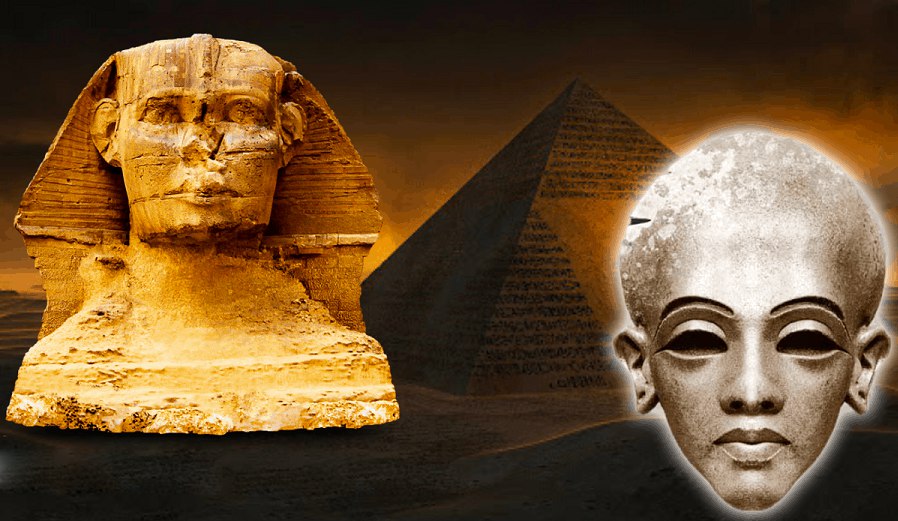The Giza plateau is the place where the most ancient and mysterious structures are situated. Along with the Great Pyramid and Khafre Pyramid, there are 8 small remains of pyramids near them. Since the research was initiated on the pyramids of Giza, there has always been some doubt on the version which says that their construction was in the 4th dynasty (2600 BC).
The theory that the Egyptian pyramids were built by the ancient workers with simple tools and technologies has been trusted by many archaeologists but always doubted. The reason for doubting this theory is not only the impressive size of the pyramids themselves but also the complexity in the design.

First of all, the shape of the pyramids and other structures built near them including the House of Eternity and Mastabas do not have any similarities. Secondly, it is impossible to move these 200 tons stone blocks manually at such height. Thirdly, there is almost no space between the facing blocks of the pyramids. This is an incredible job even now.
Since then, many different versions of the construction of the pyramids of Giza by the ancient Egyptians have been put forward. But doubts about the validity of these versions have remained.
Geologist John Anthony West and professor of Natural Sciences Robert M. Schoch concluded that the erosion of the Great Sphinx is not the result of the influence of the wind at all, but the water. And it took place thousands of years long before the appearance of pharaohs who created the Ancient Kingdom.

It was presumed that the water erosion on Sphinx could have happened due to the Nile flood but according to Schoch, if that was the reason then “the floods would have undercut the monument from its base. Instead, the heaviest erosion appears at the top of both the Sphinx and the walls enclosing it. This pattern is more consistent with rainfall from above, rather than flood water from below.”

By the time of pharaohs, the climate in Egypt had already become dry. Rain could have stopped thousands of years ago. Some scholars believe that the original limestone used in building Sphinx degraded rapidly but it could not be possible, otherwise the structure would have vanished 500 years ago. In the end, many professional geologists supported the version put forward by West and Shoch.
Egyptologist Selim Hassan wrote in his book “The Sphinx, Its history in the light of recent excavations” the following:
“If we could believe its inscriptions, we should have to credit Khufu with having repaired the Sphinx, apparently after it had been damaged by a thunderbolt. As a matter of fact, there may be a grain of truth in this story, for the tail of the nemes head-dress of the Sphinx is certainly missing, and it is not a part, which, by reason of its shape and position, could be easily broken off, except by a direct blow from some heavy object, delivered with terrific force. There is actually to be seen on the back of the Sphinx the scar of this breakage, and traces of the old mortar with which it was repaired. This scar measures about 4 meters which accords with the measurements recorded on the stela; the extra 30 cm. damage may easily have occurred at the last destruction of the tail of the nemes. Therefore, it is perhaps likely that the Sphinx was struck by lightning, but there is not a particle of evidence to show that this accident happened in the reign of Khufu.”

The two temples located right in front of the Sphinx were also built long before the first pharaohs. This is also indicated by the drain in the western wall of the Granite Temple. Why would the pharaohs need a drain in the hot and dry climate of Egypt on the Giza plateau?

This indicates that the temple was created at a time when there was a problem with the drainage of rainwater. Hence, the geologists concluded that both the temples and the main pyramids were built not during the 4th dynasty, but thousands of years before the pharaohs.



